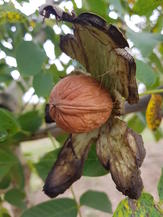
Walnuts are one of the oldest tree foods in the world, with the common walnut being native to a wide strip stretching all the way from the Balkans in Southeast Europe to China in Asia.
The common walnut derived its Latin name from ancient Rome, where it was called Juglans regia, which means “Jupitar’s crown”. In Persia it was reserved for royalty only and in France, the church used to allow people to pay their tithes in walnuts.
While walnuts seem to have been absent from British cuisine until almost after World War I, England at some point in time became such a big merchant of common walnuts that these nuts also became known as “English walnuts”.
Black walnuts are less popular than common walnuts because of their pungent taste and hard shells. Black walnuts, Juglans nigra, is native to eastern North America, whereas Californian walnuts, Juglans hindsii, is native to certain parts of California. The Californian walnuts are primarily used as rootstock for English Walnuts.
Global Production
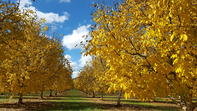
Local Production
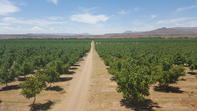
Walnuts were brought to South Africa by British settlers around the 1820s, resulting in big walnut trees being scattered all over the eastern high ground where the climate is a bit cooler, according to Rotondo Walnuts.
The Agricultural Research Centre (ARC) imported and conducted trials on various cultivars around the 1970s, but production never took off resulting in most of the material getting lost. Walnut production, in effect, is small in South Africa.
Production Area
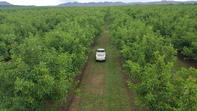
After careful evaluation, the Industrial Development Corporation in 1999 established Rotondo Walnuts PTY Ltd and between 2000 and 2008, planted 488 ha of walnut trees along the Orange River near Aliwal North. In 2019, the company is the largest and perhaps also the only walnut producer in South Africa.
The aim of the project is to demonstrate the sustainability of walnuts as an alternative high-value crop and to provide processing infrastructure and marketing assistance for future walnut producers. Besides the eastern high grounds, walnuts should be able to thrive in the Western Cape.
Varieties
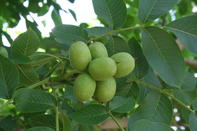
Walnuts grown in South Africa are primarily the Californian selections, namely Chandler, Serr, Vina, Howard and Sunland.
Harvesting
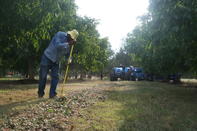
Walnut trees take roughly ten years to reach commercial production. Harvesting starts with Serr in early-March and continues until the end of April. Walnuts are harvested mechanically and manually. Post harvest, walnuts need to be cured.
The walnut curing facility developed in South Africa, is possibly a first worldwide, in that is uses solar energy, which is then recycled to control the humidity. This ensures that the walnuts produced in South Africa can never be over dried, ensuring that quality is maintained.
Sales
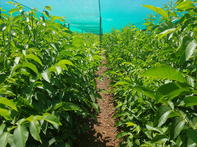
Uses
Walnuts are highly nutritious and have numerous health benefits. They can be eaten raw or toasted, as a snack or used in confectionary.By Glenneis KrielFor bulk or Walnut export enquiries please use the enquiry link below.